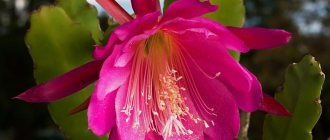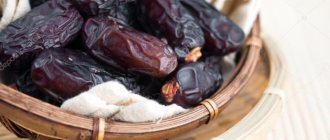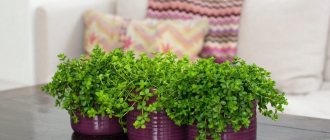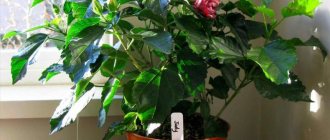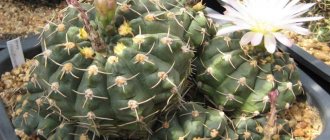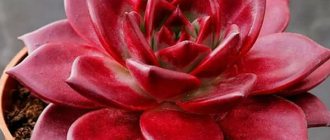The perennial succulent Stapelia is a member of the Lastovnevye family. This genus includes approximately 100 different species. In nature, this plant is mostly found in South-West and South Africa, and it prefers to grow on mountain slopes, near water bodies or near trees. Stapelia was named after Van Stapel, who was a well-known Dutch physician in the 17th century. This plant has become popular among gardeners for a relatively long time, because it is undemanding in care, and this is also due to its extremely unusual flowering. The flower of this plant is famous for its very interesting smell, which does not resemble any ordinary floral aromas. This aroma is unpleasant and more like the smell of rot. In this regard, Goethe said about this flower: “The most beautiful flowers are the most monstrous.” Flower growers are attracted to the slipway by the unusual combination of spectacular beauty with a terrible smell.
Features of the slipway
Stapelia is a succulent whose height varies from 0.1 to 0.6 m. It has a large number of tetrahedral succulent shoots branching at the base. Along the edges they have non-sharp large teeth, which is why this flower is called the “stapelia cactus.” The color of the stems is pale gray or green, and also has a violet-red tint that appears in bright sunlight. The plant has no foliage at all. There is pubescence on the surface of single or paired flowers; they are located on bent pedicels, usually at the base of the shoots and less often at the apexes. The size of the flower is 5–30 centimeters, it has a very exotic appearance and is shaped like a starfish. They are painted in one color, but they can also be variegated; each individual species has its own unique beauty, as well as a special unpleasant aroma that can cause faintness.
Is the plant poisonous or not?
Stapelia is a poisonous plant. The poison, or as it is commonly called, milky sap, is found in the shoots. People who come into close contact may experience allergic skin reactions in the form of redness and itching. For insects, milky sap is poisonous .
Children should be kept away from the flower and minimize contact with it. Because children love to taste everything. If a child manages to bite off a small part of the plant, he may experience dyspeptic symptoms in the form of:
- nausea;
- vomiting;
- diarrhea.
With such symptoms, parents should immediately show the child to a specialist. Adults must use gloves when working with the plant.
Caring for slipways at home
Temperature
When growing slipway indoors, you should first of all take into account that caring for it is directly related to the seasonality of this flower crop. For example, in the warm season, it feels best at an air temperature of 22 to 26 degrees, while in the summer it is recommended to move it to the terrace or balcony. In spring and autumn, the slipway has a dormant period. In winter, the plant should be removed to a cool place (no warmer than 15 degrees).
Lighting
The flower needs a lot of bright light, and it needs sunbathing every day, otherwise the shoots will become thin and elongated, which is why flowering may not occur at all. However, on very hot days at midday, the plant needs protection from the scorching rays of the sun, this will avoid the appearance of burns on its surface. Experts advise placing the slipway on a window located in the western or eastern part of the apartment.
Watering
Since slipway is a succulent, it does not need to be sprayed or watered abundantly. If water stagnates in the substrate, this can cause the development of a fungal disease, which leads to rotting of the flower. To prevent this, during planting, a drainage layer should be laid on the bottom of the pot, which can be made from clay shards or expanded clay. In March–September, watering is carried out no more than once every 7 days, in October–December - once a week, and in December and January there is no need to water the slipway at all.
Top dressing
This succulent needs to be fed in the summer once every 2 weeks; for this purpose, nutrient mixtures for cacti and succulents are used. To increase the plant's resistance to diseases, it should be fed with potassium fertilizer. In winter, there is no need to feed the slipway.
Slipway transplant
Young specimens need regular replanting, which is carried out once a year in the spring, as they grow in width relatively quickly. Adult flowers are transplanted once every 2–3 years. Experienced flower growers recommend that when replanting a plant, pull out old stems from the center of the bush, because they will no longer bloom. Perennial slipways are not recommended to be replanted; they only need to annually change the top layer of the soil mixture to a fresh one, and the stems must be pulled out from the middle of the bush.
To plant such a succulent, you need to take a not very deep pot, since its root system is underdeveloped. A drainage layer should be placed at the bottom of the pot, which should occupy 1/3 of the container. If desired, you can make the substrate yourself; to do this, you need to combine coarse sand and turf soil (1:2) or you can purchase a mixture for succulents and mix it with charcoal. Before planting, the substrate must be steamed. After transplantation, the flower should not be watered for several days.
Flowering slipway
As soon as the stapelia blooms, everyone in the room will immediately know about it, and this will happen because of the unpleasant smell of the flower. This extremely unusual aroma of a flower growing in the wild is necessary in order to attract carrion flies belonging to the family Calliphoridae, which are its pollinating insects. The fact is that these insects like this aroma. Flies pollinate the flower and also lay eggs in it. However, you should know that the species flavo-purpurea, native to Namibia, has a relatively pleasant waxy aroma. But the bad smell emanating from the flower does not scare away flower growers; slipway remains very popular to this day. To prevent the apartment from smelling rotten during the flowering of this plant, it is recommended to move it to the balcony, and the problem will be solved. Flowering lasts for about half a month.
Diseases and pests of slipway
All problems that may arise with this flower are associated with stagnation of liquid in the substrate. In this regard, it is very important to water the slipway correctly. And among the pests that can settle on it are aphids, spider mites, and mealybugs. To get rid of them, the bush must be treated with an insecticidal agent, which can be purchased at a specialized store. It is noteworthy that stapelia, which grows in the wild, has very high resistance to both pests and diseases.
Stapelia does not bloom
It happens that the slipway does not bloom, and this can happen for various reasons, for example: lack of light, warm wintering, excessively abundant and frequent watering, inappropriate fertilizer, excess or lack of nutrients in the substrate. In order for the plant to bloom regularly, you need to follow several rules:
- Provide the flower with the correct watering regime: in spring and summer, watering should be done once every half month, and between them the substrate in the container should dry completely; starting from October, the number of waterings should be reduced to once every 4 weeks, and in December–January the plant don't water at all.
- Throughout the entire dormant period, the plant should be kept in a cool room.
- You should not add too much fertilizer to the substrate, especially those containing nitrogen.
- The soil for planting should be sandy loam.
- The plant needs good lighting.
If the flower does not have enough light, it may turn yellow at the base of the stem. In this case, it is recommended to trim the shoots and use them as cuttings.
Unusual indoor plants Stapelia
Top dressing
Home care involves timely application of fertilizers:
- In summer, they enrich the soil with special products for cacti and succulents. Frequency – every 15 days;
- in August and September, the use of drugs with a high potassium content is required. They strengthen the flower’s immunity and enhance its ability to resist diseases;
- In winter there is no need for fertilizing.
Note! The preparations “Agricola”, “Garden of Miracles”, “Uniflor” have proven themselves well. They contain an optimal concentration of useful substances, due to which the succulent is more tolerant of external unfavorable factors, grows and develops intensively.
Reproduction of slipway
Propagation of slipweed by cuttings
To cut cuttings from the slipway, use a sharp knife, which must first be disinfected. The cuts on the mother bush and on the cuttings should be sprinkled with crushed charcoal. Before planting the cutting, it must be dried for several hours. After this, it must be planted in a substrate consisting of coarse sand, to which a little finely chopped peat should be added. After complete rooting, the plant should be transplanted into a pot, reaching 70 mm in diameter, it should be filled with a soil mixture, which includes coarse sand, light turf, and leaf soil (1: 1: 1), and a handful of charcoal should also be poured into it .
Propagation of slipweed by seeds
Only after the fruit of a given flower has fully ripened can the seeds be extracted from it, and this will happen no earlier than after 12 months. After the seeds have ripened, they must be sown in bowls, which are filled with a sandy light substrate. The first seedlings should appear 20–30 days after sowing. After the plants have grown a little, they need to be planted into pots up to 60 mm in diameter and filled with the same soil mixture that is used for planting rooted cuttings. After 12 months, young plants need to be transplanted into pots reaching 90–100 mm in diameter; for this, the transshipment method is used. If you choose this growing method, you should keep in mind that the grown plants may not retain the varietal characteristics of the parent plants.
Preparing the soil for replanting
Before replanting Stapelia, you need to take care of the quality of the soil. Drainage material in the form of pebbles, a small amount of expanded clay or small fragments of red brick should be poured into the bottom of a shallow pot.
The remaining free space is filled with slightly acidic soil, which contains 60% river sand, 35% turf soil and 5% charcoal.
These components are thoroughly mixed until a homogeneous mixture is formed. At this stage, the soil in the pot is completely ready for further replanting of Stapelia.
Types of slipway with photos and names
Stapelia asterias
This low-growing plant reaches only 20 centimeters in height. The stems are most often colored green, but can also be light red, and have small teeth on their blunt edges. On the surface of the brown-red flowers there are thin stripes of yellow color, as well as pale pink thick hairs. The flowers are on long stalks at the base of young shoots. This species has a variety - stapelia shiny: it does not have yellow stripes on the surface of the flowers.
Giant slipway (Stapelia gigantea)
This succulent is a perennial plant with powerful, erect stems reaching 20 centimeters in height and 3 centimeters in diameter. The shoots have blunt edges and a small number of small teeth. The flowers are very large, they can reach about 35 centimeters in diameter. They are located on long stalks and have elongated, pointed, slightly bent yellowish triangular petals, on their surface there are thick red hairs, and along the edge there are long white fibers. The smell of such flowers is not as unpleasant as that of other types of slipway.
Stapelia variegata (Stapelia variegata)
The height of such a low-growing plant is only 10 centimeters. The stems are most often green, but they are also pale red, with denticles on their blunt edges. One or up to 5 flowers can be placed at the base of young stems. The yellow petals have an ovoid shape, pointed at the tips. Their outer part is smooth, but on the inside they have a wrinkled surface with asymmetrical spots or dark brown stripes. Flowering occurs in summer.
Stapelia glanduliflora
The height of this perennial is about 15 centimeters. The thickness of the straight stems is about 30 mm; they have wing-shaped edges, which are covered with sparse small denticles. The bush blooms with 1–3 flowers on long stalks; the yellow-green petals have a triangular, pointed shape, with pinkish spots and stripes on their surface. The petals are slightly bent at the edges and have long white hairs, and their surface is strewn with a large number of club-shaped colorless hairs.
Stapelia flavo-purpurea
The height of the bush is about 10 centimeters. The color of the stems is usually green, but can also be purple; they have blunt edges on which the cloves are located. At the tops of young stems, 1–3 flowers bloom; their petals are ovoid, pointed and triangular in shape, their edges are strongly curved. The outside of the flower is yellowish, bare and smooth, and the inside is yellow-golden (sometimes burgundy) and wrinkled. This flower has a rather pleasant waxy smell.
Stapelia grandiflora
This perennial has tetrahedral stems, and on the edges there are sparse curved teeth. The large flowers have lanceolate-shaped petals, the outside is green-blue, the inside is burgundy, and there are tufts of gray hairs on their surface. The petals are curved along the edge, and they have pubescence in the form of cilia. Flowering occurs in summer. The smell of the flowers is similar to the aroma of rotting meat.
Description
The plant belongs to the Kutrov (Lastovnevy) family, a genus of succulents. The flowers are different, from small, up to 5 mm, to huge - 30 cm. In indoor slipways - 5-6 cm. The shape is a regular five-pointed star, reminiscent of a strongly opened bell.
Shades – fleshy burgundy, brown, beige with black stripes or specks. Some varieties have heavily pubescent flowers.
Description of the general appearance: the stems are calm shades of green, grayish-green, bluish; in the sun they can become violet-brown. They are numerous, succulent, with jagged edges, and can reach a length of 60 cm. There are no leaves.

